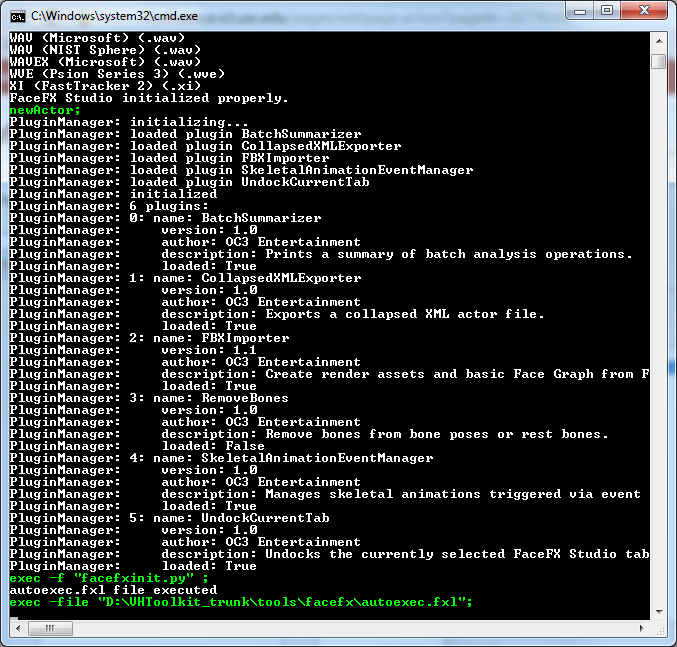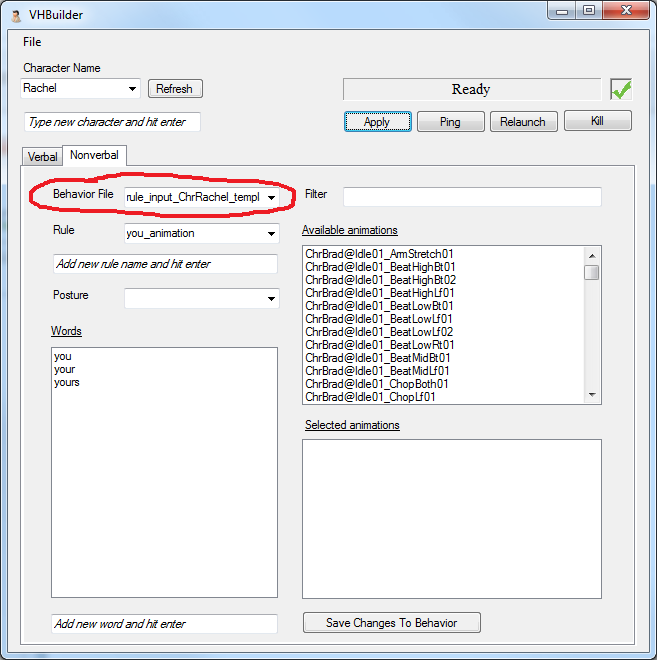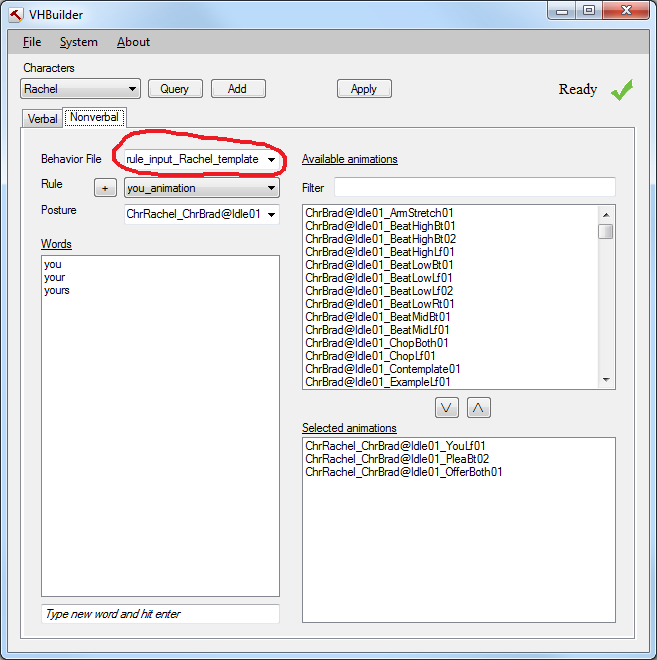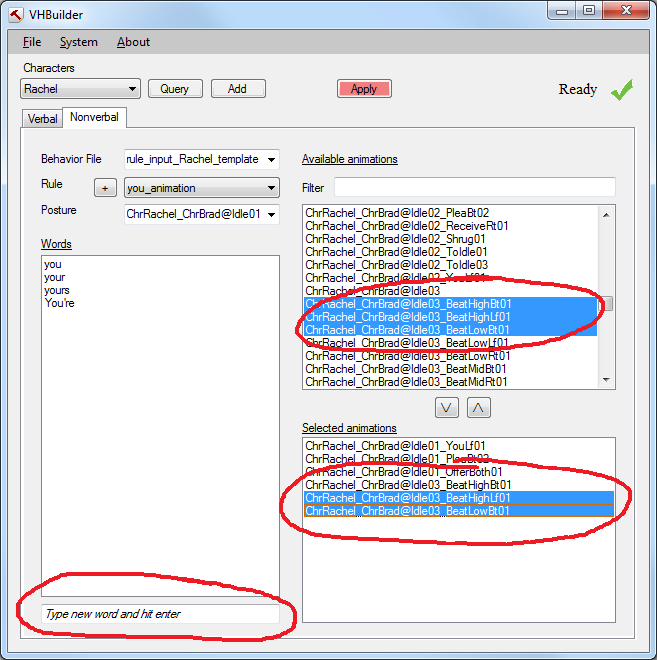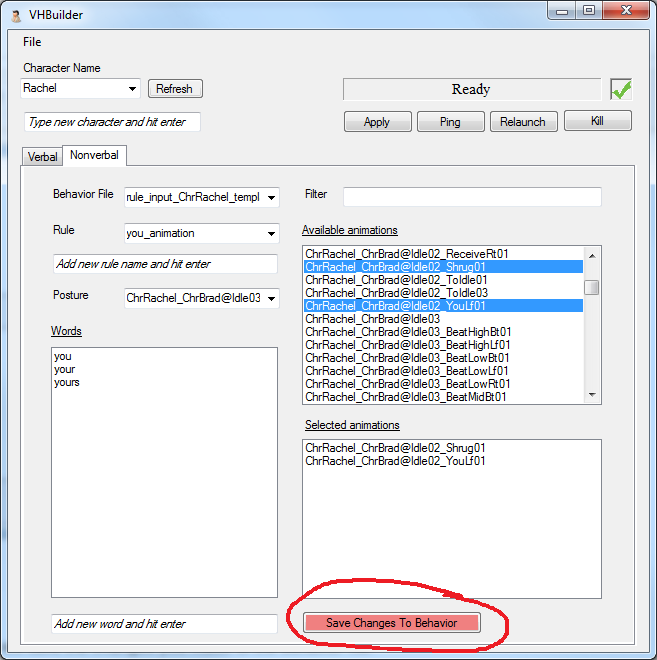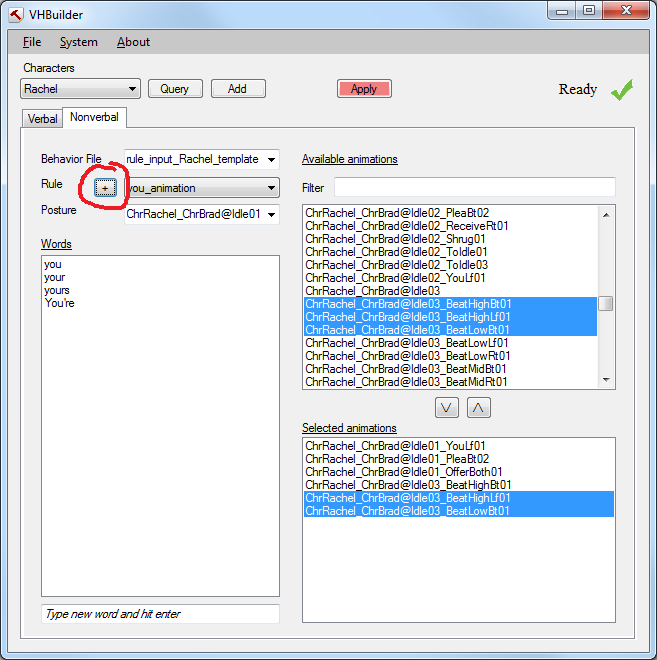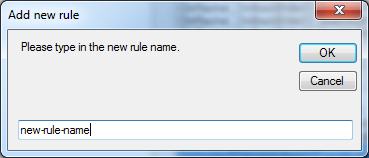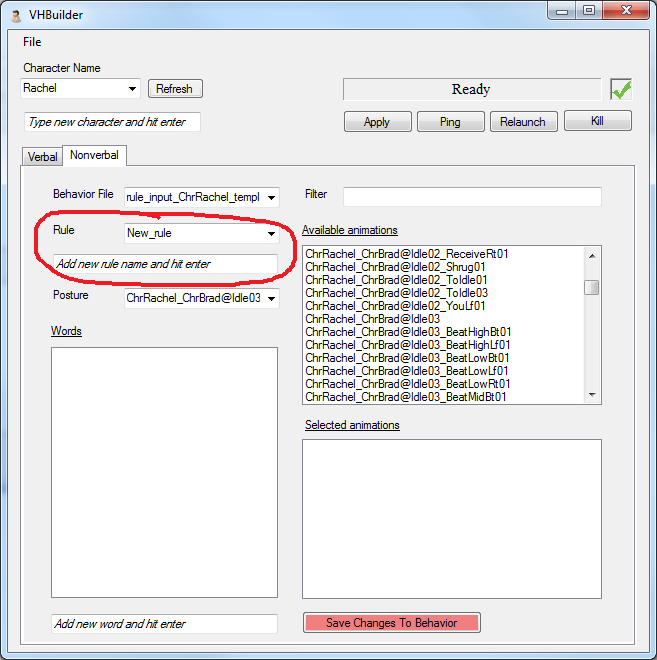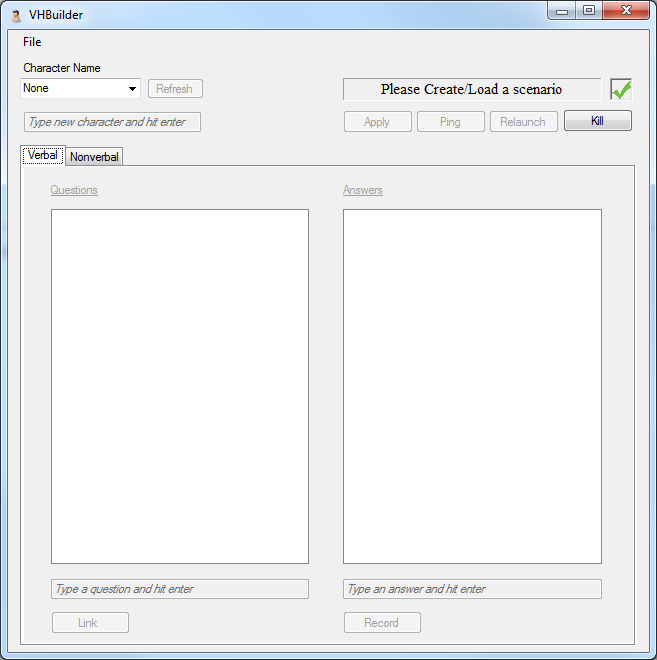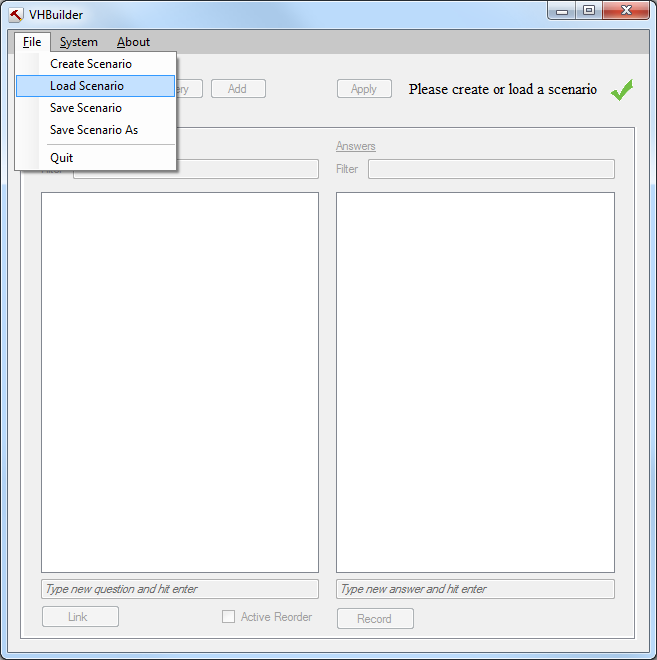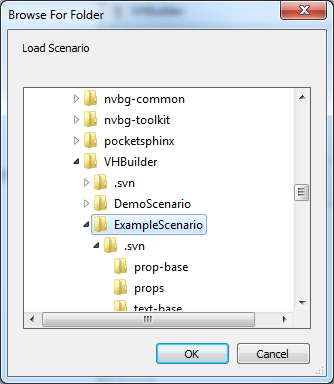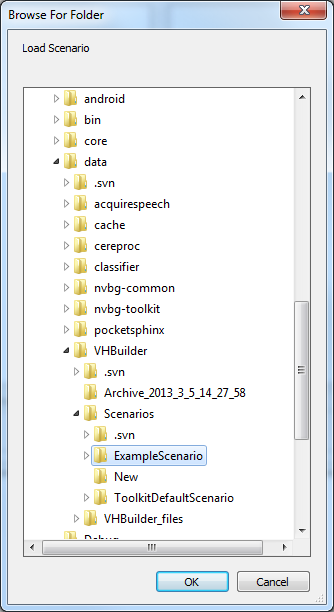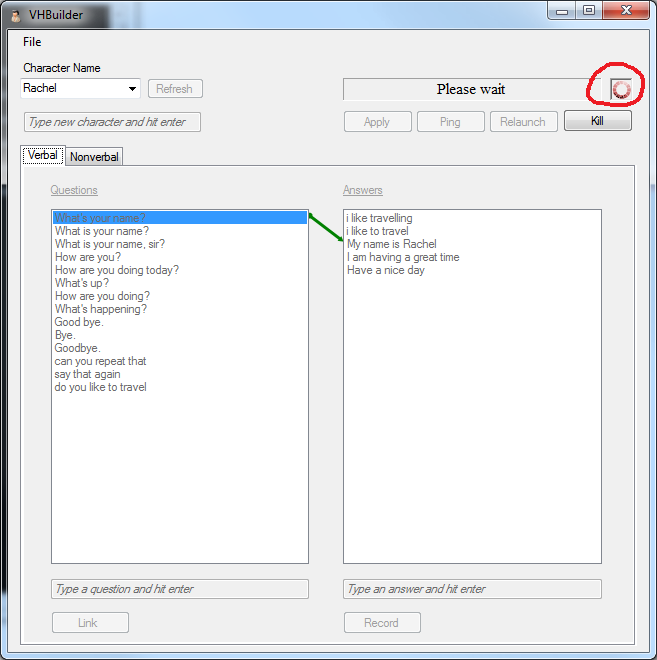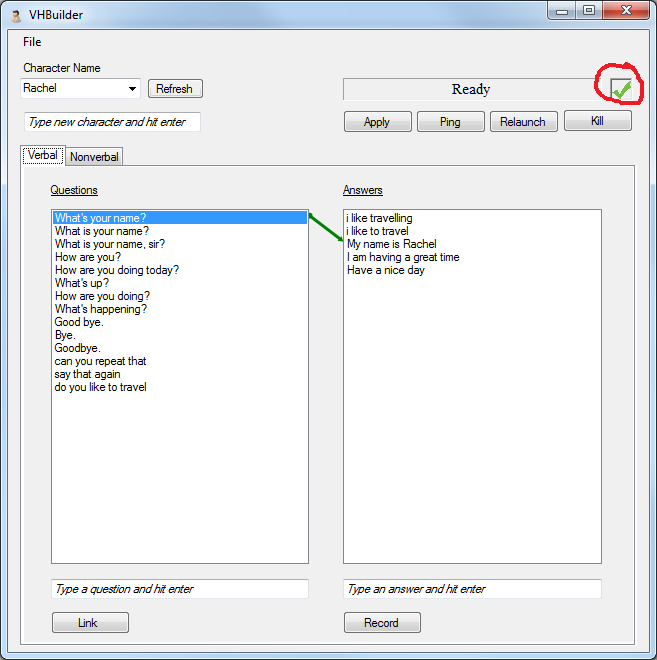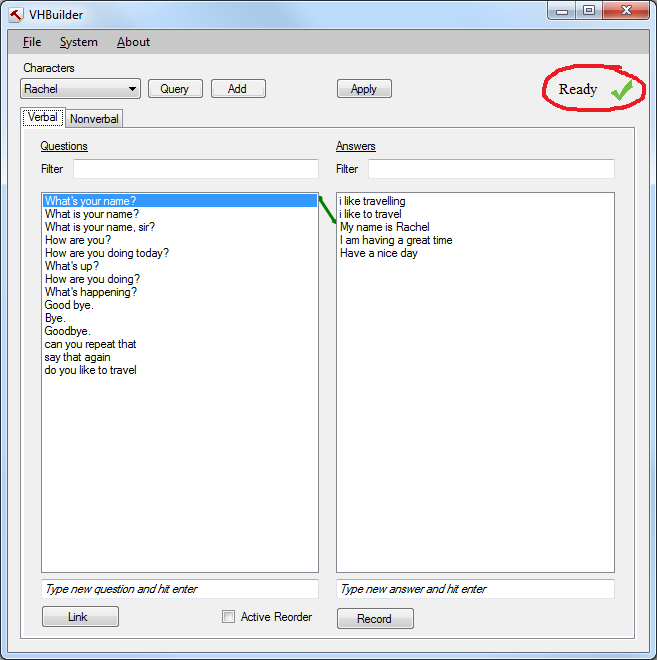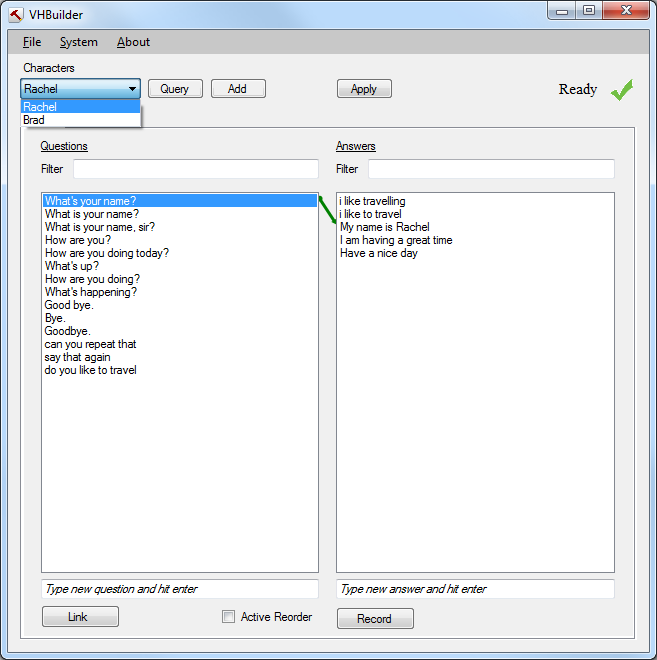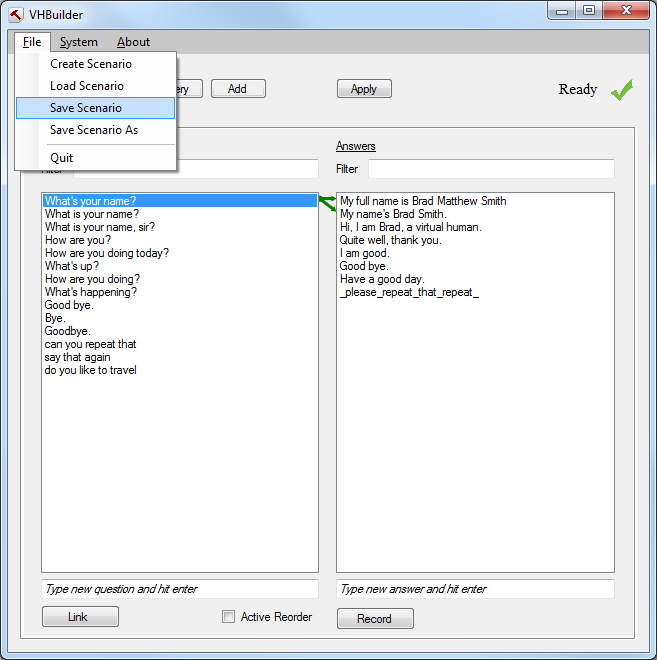Page History
...
2) On releasing the 'Record' button, you will see a window popup as shown below. This generates the bml with the lipsync for the audio you just recorded. Please wait until the tool indicates otherwise. Once the tool indicates it is done, the audio has been recorded and the lipsync generated. You should now be able to ask the corresponding question and hear the character respond in the recorded voice.
In case you don't have FaceFx installed on your machine, the window you see will look different as VHBuilder will default to using the VisemeSchedulerSOX tool instead which is our in-house tool for generating basic lipsync.
Modifying the character behavior
1) In order to modify the character behavior, please select the 'Non-Verbal' tab as shown below.
2) For each character, you can select the 'behavior file' that you want to use for that character. e.g. in the example below, we have selected 'rule_input_ChrRachelRachel_template.xml' for the selected character 'Rachel'. Once you select the behavior file for a character, the tool will remember it.
3) In order to modify a rule, you select the 'Rule' that you want to modify and the 'Posture' that you want the rule to apply to, using the drop-down lists as shown below. The drop-down list will contain the available rules and postures for the character.
Now you can add words that will trigger this rule under the 'Words' section by typing the word in the text-box and hitting the enter key. You are also able to select the animations that will be triggered when the character speaks that particular word, by clicking on the animation name and hitting enterselecting it. The list of selected animations for a particular rule is displayed in the bottom right as shown.
Notes:
a) The character only performs the animation when the words in the 'Words' list are spoken and he is in the specified posture.
b) You can select multiple animations from the 'Available animations' list by holding down the 'ctrl' key and clicking on them.
c) If you have Unity running with the characters loaded, you can double click on the animations (or select a posture) and see how they play on the character.
d) You can select and hit enter to add animations and hit delete in the 'Selected Animations' list to remove animations.
3) Once you are done adding the words and selecting the animations, a) Hit the 'Save Changes To Behavior' button as indicated below. This will save the changes you made to the behavior file. b) Then hit 'Apply'. This will configure NVBG. On doing this, the character behavior has been applied. Now when the character speaks that particular word, he will perform one of the selected animations.
4) You can also add a rule by entering the rule name in the text-hitting the '+' button next to the Rule drop-down list as shown below. This will pop up a dialog box as shown below.
Hitting OK, This will create a new rule and you can go ahead and add words to this rule and select animations for it as mentioned above. Rule names are mostly for organizational purposes allowing you to have different rule names for different set of words.
Loading an existing scenario
- Launch the VHBuilder application. It will load up with a message ' Please Create/Load a scenario' as shown below
21) Click on the File menu option on the top left and select 'Load Scenario' as shown
32) A dialog box will pop up as shown below prompting you to select an existing scenario. Select a previously saved scenario folder to load up an existing scenario. e.g. In the toolkit trunk, under data/VHBuilder/Scenarios, there is an existing scenario called ExampleScenario. Please select this as shown
Select the scenario you want to load
34) On selecting the example scenario and clicking 'OK', you should see a few windows show up and minimize. This should include the NVBG, NPCEditor, VHTSpeechRecorder, AcquireSpeech, ElvinParser, PocketSphinx-sonic-server and TTSRelay.
During this interval, the tool should indicate that it is busy loading. It does this using a 'wait' image on the top right as shown below
5) Once the scene is loaded and all the components are initialized, the tool will indicate that it is ready as shown below.
6) At this point, the scene has been loaded and you can begin interaction with the characters. Note that currently the tool does not load up the characters in Unity automatically (yet to be implemented). So you will have to open up an empty scene in the Unity editor (e.g. CampusEmpty) and drag the listed characters in the scene and hit play in Unity. The characters that are in the scene can be seen in the combo-box as shown below
7) Once Unity loads up with the characters, then you can begin interacting with the characters just as you always do. The characters will respond to the questions with the answers as they are linked.
...
1) In order to save the scenario and all the changes made to it, select the File menu option and hit the 'Save Scenario' as shown below
